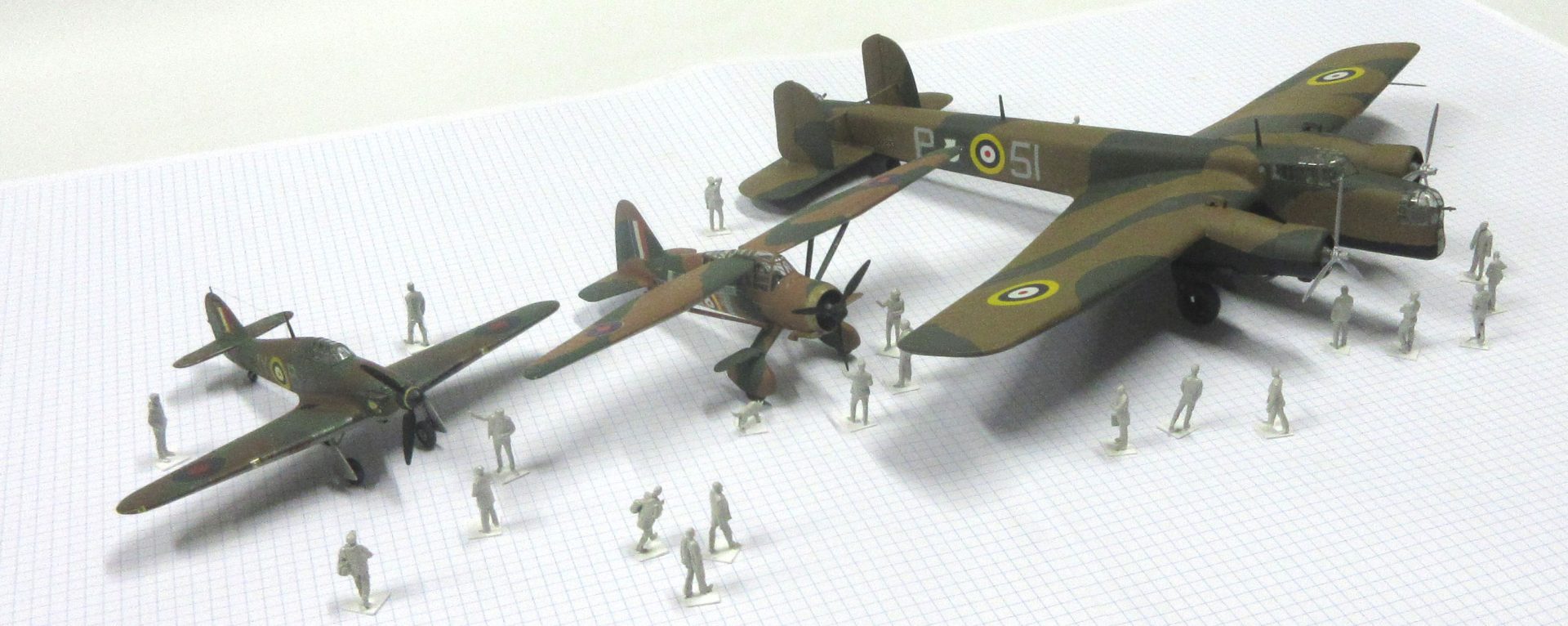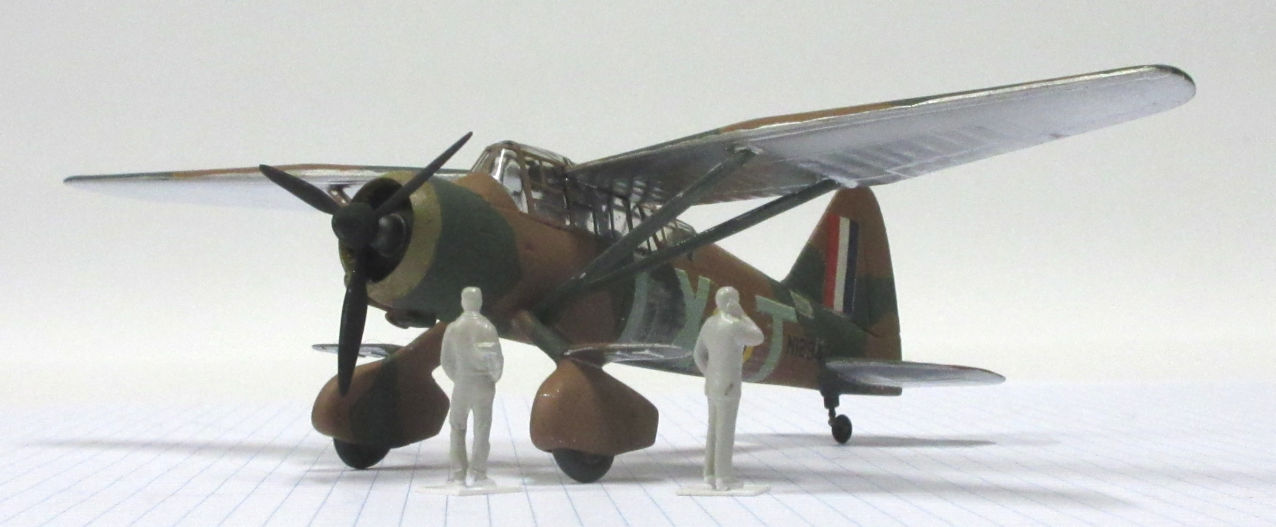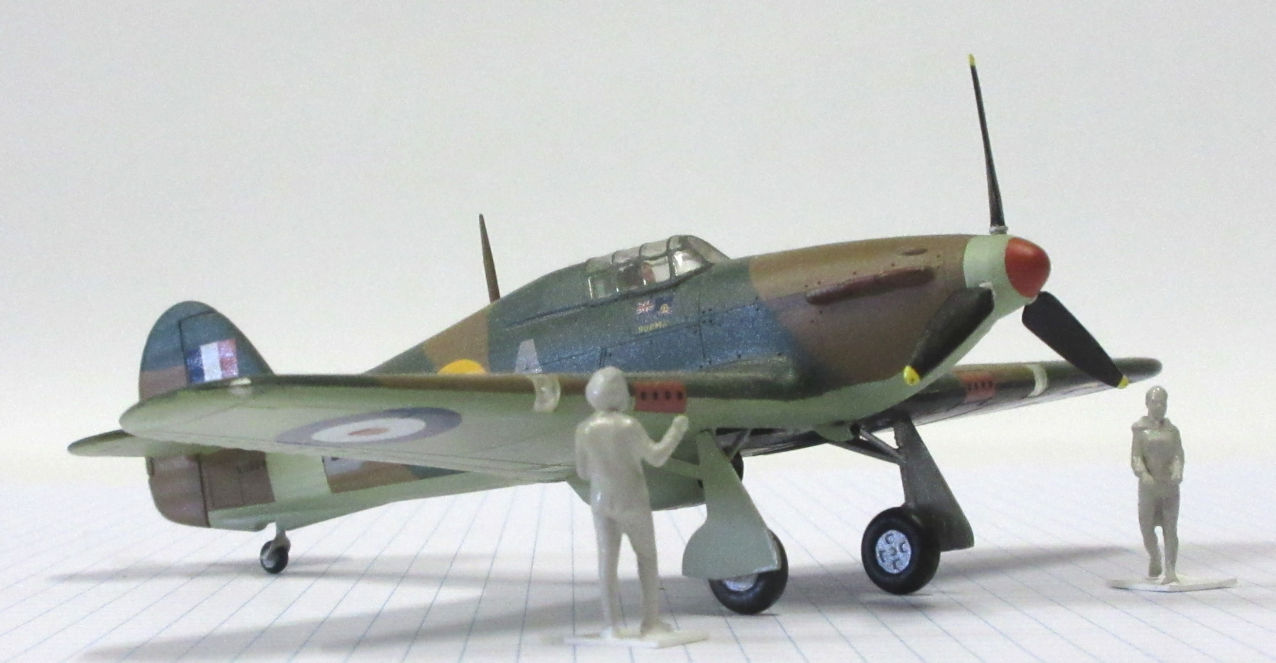Dark Earth and Dark Green
Westland Lysander – Armstrong Whitworth Whitley – Hawker Hurricane

This week I thought we’d look at the colours of some aircraft and what caught my eye was the camouflage colours flown by Royal Air Force aircraft at the beginning of World War II. At that time those aircraft were camouflaged in dark green and a dark brown colour called ‘dark earth’. This camouflage was used more to conceal the aircraft parked on the ground than in the air but, as British fighters began flying over Europe again, the RAF found a dark grey and dark green colour scheme was better and began painting them in those colours from 1941. The RAF’s bombers, however, retained their earlier dark green and earth schemes.
Modellers can be an argumentative lot and one of the topics that gets them going is ‘what were the real colours of some well known World War II camouflage paints’. Some of us, who are not quite so fussy, use the colours that scale model paint makers tell us is Dark Earth, but that’s not always the same colour. On the three models here the Lysander was painted in Humbrol Dark Earth, the Hurricane in Modelmaster Dark Earth and the Whitley in one of the paints that was easy to find in the mid 2010s (but there were so many by then I forget which one I used).
Westland Lysander in 1/72 by Matchbox
The Lysander was designed in the mid 1930s to serve as an army-cooperation aircraft for the Royal Air Force. One of its primary roles was to be artillery spotting for the Army so it was given high wings and a relatively low speed for that role. The Lysander was unsuccessful during the Battle of France and easy fodder for German fighters. However, it was the right aircraft for the role of liaising with resistance fighters in France during the occupation because of its short landing and take off abilities so it could deliver and extract agents and downed aircrew, and made its reputation in that role.
This model was made from the Matchbox kit which was first published in 1972. Around that time there were also the Frog kit that was published in 1968 and the second Airfix kit that was first published in 1973 (rather than the first version which was among Airfix’s first kits, published in 1956). At the time I made this model I thought it was the cleanest and best looking kit of the three options but the thing missing from all of them was adequate cockpit detail. Anyhow, you can ignore all those kits because Dora Wings published a new kit of the Lysander in 2019. In addition to excellent plastic parts the kit also includes very good decals, a photo etch fret and masks for the vast clear windows. Cybermodeler Online exclaims ‘What a magnificent little miniature’ but the review on the Fine Scale Modeler issues a slight warning when it says; ‘It will take a modeler of some experience to build the kit, but a less experienced modeler could eliminate much of the PE and still produce an excellent model’.
Armstrong Whitworth Whitley Mk II in 1/72 by Frog with Flightline conversion parts
This aircraft was designed in the mid 1930s to replace the RAF’s Heyford biplane bombers. The prototype flew in 1936, began entering service in 1937 and they were the air force’s first monoplane bomber. They were longer and larger than most other bombers of the time because they were also planned to be used as troop transports to the far reaches of the British Empire. They took part in the first air raids on Germany but were largely obsolete by 1941 and had been replaced in front line service by more modern aircraft by 1942. However, they were used in secondary roles such as maritime reconnaissance for a few more years.
I made this model using the Frog kit that was first published in 1972, and was subsequently published in many different boxings. There was also a Fly kit published in several versions between 2011 to 2014 which always looked suspiciously like the Frog kit to me but, on looking again, isn’t. I might have saved myself a great deal of stress and grief had I known that when I decided I wanted a model of a Whitley. A detailed build review of this kit that can be seen on MMScalemodels demonstrates that an excellent model can be made from the Fly kit. Despite this, the general consensus is that the Airfix kit that was first published in 2015 is the Whitley kit that you need. The reviewer for Fine Scale Modeler noted many positive points and no negative ones while the reviewer for Hyperscale concluded what it was a ‘lovely build’.
Hawker Hurricane Mk I in 1/72 by Airfix
This aircraft was, like the previous two, designed in the mid 1930s to replace the RAF’s existing biplane aircraft. The prototype made its maiden flight in November 1935, they were introduced to service in December 1937 and the RAF had eighteen Hurricane squadrons at the beginning of World War II. It was rugged and reliable, could be adapted to many roles and over 14,500 had been manufactured when production ended in 1944. Many now recognize the Hurricane as the hero of the Battle of Britain and it went on to serve with equal success in most areas of combat during the war.
Let me be brief about this one. I made this model from the 1978 Airfix new-tool kit which was reckoned to be a very good kit in its day. Since then, however, any kit making company worth its salt has made a Hurricane including; Hasegawa (1995), Academy (1997), Revell (1998), Hobby Boss (2005), AZmodel (2010) and Airfix again (2013). The Fine Scale Modeler review concluded that the Airfix kit would be suitable for beginners and that ‘experienced modelers will enjoy it as a respite from more demanding builds’. That sounds like my kind of kit but, for those of us who want the best and top of the line kit of the Hurricane, the choice has to be the Arma Hobby kit that was first published in 2018 and is now available in several versions. ‘Beautiful’, ‘excellent’, ‘some of the best I’ve seen in this scale’ and ‘awesome bargain’ says one review in Hyperscale. If I feel the urge to make another Hurricane I know which kit I’ll be buying.
By the way, we are building a Special Display featuring a number of Hurricanes of various marking in a variety of colour scheme that you can see here.



